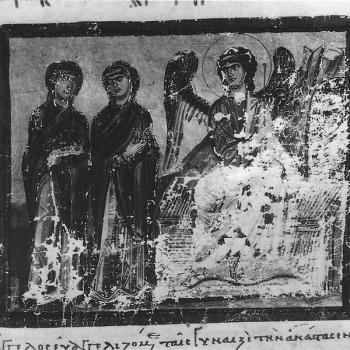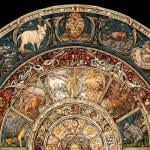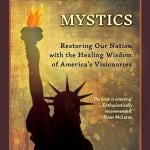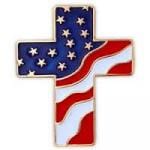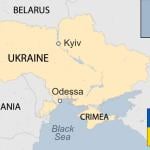If you’ve spent any time at all reading the Bible, “Herod” is a title common to the experience. If you’re anything like me, you probably assumed for the longest time that “Herod” was a name, and referred exclusively to one person. I was half right: Herod is indeed a name, but it’s not exclusively for one person. Would you be surprised to learn that Herod is actually a reference to an entire dynasty? There were approximately 15 different individuals in the Herodian dynasty, all of whom reigned between the Old and New Testaments. Interested to learn more? Let’s read on to learn about the “Herods” and the work they did.
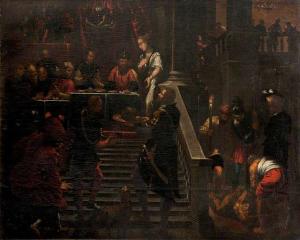
The dynasty’s origins
The Herodian dynasty started ruling in 47 BC and lasted until 72 AD. In all, they ruled the region of Judea under the Roman Empire, for 118 years. Initially, the Herodian kingdom was a client state of the Roman Republic, led by Herod the Great. After his death, the Herodian tetrarchy was divided among his sons and daughter, existing as a vassal state under the Roman Empire.
The dynasty came to power through Antipater, the chief advisor to Hyrcanus II of the Hasmodean dynasty. His father, Antipas, was the governor of Edom. During this era, Edomites were forced to convert to Judaism. As a result (and a fact surprising to some), the Herodian dynasty was Jewish by conversion. Due to the family’s position, they gained considerable favor and influence. In 47 BC, Antipater was hand-selected by Julius Caeasar to be procurator, or financial director, over Judea. In turn, Antipater appointed his two sons (Phasel and Herod) to be governors of Jerusalem and Galilee. After Antipater was murdered in 43 BC, his sons continued to rule. In 43 BC, they became Tetrarchs under Mark Antony.
The Herodian kingdom
Herod the Great, son of Antipater, rose to power in 40 BC during a dispute with the Hasmonean dynasty. He escaped to Rome, convincing the Roman Empire of his loyalty. Starting in 37 BC, he ruled for 34 years. He was known for his brutal victories and expansive programs. One of his best-known programs included building a plaza surrounded by the retaining walls at the Temple Mount in Jerusalem.
The Herodian Tetrarchy
Herod the Great died in 4 BC. His kingdom was divided into a tetrarchy, among his sons (Herod Archelaus, Herod Antipas, and Philip) and daughter (Salome I). After Herod Archaelus died in 6 CE, his territories became Roman provinces. Philip ruled over territory east of the Jordan River until 34 AD. Herold Antipas ruled over Galilee and Perera until exiled by Caligula to Spain in 39 AD. Salome I was the toparch (a type of Greek governor) of Jabneh, an ancient Palestinian city.
There were a few other rulers after, the two most prominent being Herod Agrippa I and II (both of which are mentioned in the New Testament). The dynasty died out sometime between 92 and 100 AD.
Learning about the different Herods raises the question, who was who in the Bible? Would you be surprised to learn there are six different Herods mentioned in the New Testament? All are related to one another.
Herod the Great
Herod the Great ruled during the time of Jesus’ birth. He’s the one who tried to get information through the Wise Men, and had the males under two years old killed.
After Jesus was born in Bethlehem in Judea, during the time of King Herod, Magi from the east came to Jerusalem and asked, “Where is the One Who has been born king of the Jews? We saw His star when it rose and have come to worship Him.”
When King Herod heard this he was disturbed, and all Jerusalem with him. When he had called together all the people’s chief priests and teachers of the law, he asked them where the Messiah was to be born. (Matthew 2:1, NIV)
When Herod realized that he had been outwitted by the Magi, he was furious, and he gave orders to kill all the boys in Bethlehem and its vicinity who were two years old and under, in accordance with the time he had learned from the Magi. (Matthew 2:16, NIV)
Herod Archelaus
Herod Archelaus, Herod the Great’s son, ruled the territory around Jerusalem (Jerusalem and Samaria). He is mentioned in Matthew 2:22:
But when he heard that Archelaus was reigning in Judea in place of his father Herod, he was afraid to go there. Having been warned in a dream, he withdrew to the district of Galilee, and he went and lived in a town called Nazareth. So was fulfilled what was said through the prophets, that he would be called a Nazarene. (NIV)
He was replaced by another infamous Biblical figure we know as Pontius Pilate.
Philip
Philip is mentioned in Luke 3:1-2 as tetrarch of Iturea and Traconitis:
In the fifteenth year of the reign of Tiberius Caesar—when Pontius Pilate was governor of Judea, Herod tetrarch of Galilee, his brother Philip tetrarch of Iturea and Traconitis, and Lysanias tetrarch of Abilene— during the high-priesthood of Annas and Caiaphas, the word of God came to John son of Zechariah in the wilderness. (NIV)
Herod Antipas
Herod Antipas was called “the fox” in Luke 13:31-32:
..Some Pharisees came to Jesus and said to Him, “Leave this place and go somewhere else. Herod wants to kill you.”
He replied, “Go tell that fox, ‘I will keep on driving out demons and healing people today and tomorrow, and on the third day I will reach My goal.’ (NIV)
He is also responsible for the death of John the Baptist:
Now Herod had arrested John and bound him and put him in prison because of Herodias, his brother Philip’s wife, for John had been saying to him: “It is not lawful for you to have her.” Herod wanted to kill John, but he was afraid of the people, because they considered John a prophet.
On Herod’s birthday the daughter of Herodias danced for the guests and pleased Herod so much that he promised with an oath to give her whatever she asked. Prompted by her mother, she said, “Give me here on a platter the head of John the Baptist.” The king was distressed, but…he ordered that her request be granted and had John beheaded in the prison. His head was brought in on a platter and given to the girl, who carried it to her mother. (Matthew 14:3-11, NIV)
Jesus also appeared before him:
When he learned that Jesus was under Herod’s jurisdiction, he sent Him to Herod, who was also in Jerusalem at that time.
When Herod saw Jesus, he was greatly pleased…From what he had heard about Him, he hoped to see Him perform a sign of some sort. He plied Him with many questions, but Jesus gave him no answer…That day Herod and Pilate became friends—before this they had been enemies. (Luke 23:7-9, 12, NIV)
Herod Agrippa I
Herod Agrippa I was the grandson of Herod the Great and Nephew of Herodias, Herod Antipas’ wife. We know him as he was responsible for James, brother of John put to death, and also had the Apostle Peter arrested in Acts 12:1-4:
It was about this time that King Herod arrested some who belonged to the church, intending to persecute them. He had James, the brother of John, put to death with the sword. When he saw that this met with approval among the Jews, he proceeded to seize Peter also. This happened during the Festival of Unleavened Bread. After arresting him, he put him in prison, handing him over to be guarded by four squads of four soldiers each. Herod intended to bring him out for public trial after the Passover. (NIV)
It also states that when Peter escaped prison by divine means, he had the guards set for duty killed.
His end is found in Acts 12:21-23:
On the appointed day Herod, wearing his royal robes, sat on his throne and delivered a public address to the people. They shouted, “This is the voice of a god, not of a man.” Immediately, because Herod did not give praise to God, an angel of the Lord struck him down, and he was eaten by worms and died. (NIV)
Herod Agrippa II
The final “Herod” in the Bible was the son of Herod Agrippa I. He interviewed Paul along with Festus when the Apostle Paul was imprisoned in Caesarea. It was he who said the now famous quote:
Then Agrippa said to Paul, “Do you think that in such a short time you can persuade me to be a Christian?” (Acts 26:28, NIV)
Why the Herods matter
The different leaders of the Herodian dynasty are mentioned at different points in the New Testament to give historical context to Bible events. By learning which ruler is which, we can better pinpoint Biblical time lines, even if they are approximate. They also teach us much about the way dynastic families ruled in Bible times.
Which Herod did you learn the most about?






